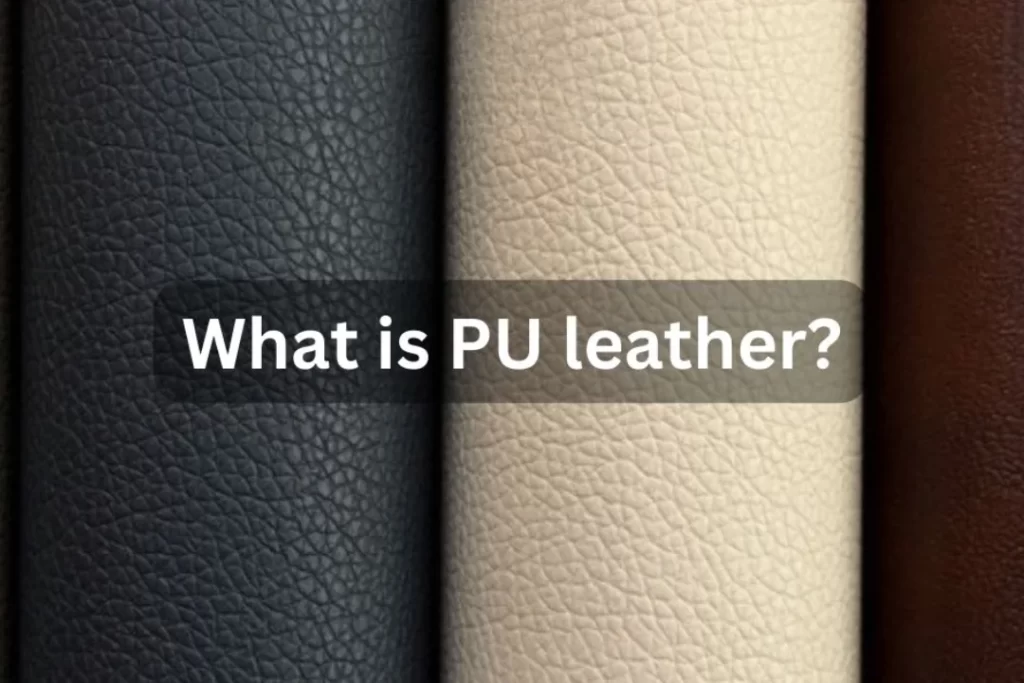
What Is PU Leather
Find Out what is pu leather and its increasing popularity as a sustainable alternative to real leather In the realm of fashion and design, genuine

In the realm of fashion and design, genuine leather has long held a position of prestige and refinement. However, recent advancements in material science have brought forth PU leather, a synthetic alternative that offers a compelling blend of sustainability, versatility, and cost-effectiveness. Whether you are a fashion-conscious individual seeking stylish accessories or a business owner looking for sustainable materials. PU leather has emerged as a frontrunner in this endeavor. In this blog you will find an-depth guide to what is pu leather, its pros and cons, its composition, how it offers an alternative to its natural counterparts, and its ethical considerations.

Pu leather stands for polyurethane, which is a type of plastic. It is made of polyurethane resin, which is derived from petroleum-based raw materials. Pu leather is a very popular synthetic material that is often used as an alternative to real leather to look and feel like real leather.
The material sources of PU leather depend on the manufacturing procedure and the type of polyurethane resin. Some of the material sources from which pu leather is made, include:
Petroleum is the basic source of raw materials for the production of polyurethane resin. It’s natural sources cannot be regenerated once used.
Polyols are organic compounds used in polymerization reaction of polyurethane. They are originated from different petroleum based organic compounds such as propylene oxide and ethylene oxide.
Isocyanates are derivatives of aniline synthesized from benzene. It is amongst the most important component of polyurethane resin.
Different additives are added in the formulation of PU leather for the betterment of its characteristics such as flexibility, and stabilizer for UV resistance. Additives have different sources such as petroleum, natural and artificial compounds.
Research has also discovered the use of some more sustainable alternatives to petroleum-based raw materials for PU leather production. These alternatives are:
Bio-based polyols are originated from natural sources such as plant oils or biomass (renewable sources) .
Plant based isocynates are synthesized from castor oil and soy oil based natural products.
Eco –friendly stabilizers are non-toxic stabilizers, natural pigments and plasticizers.
The production process of PU leather can be classified into three main stages including:
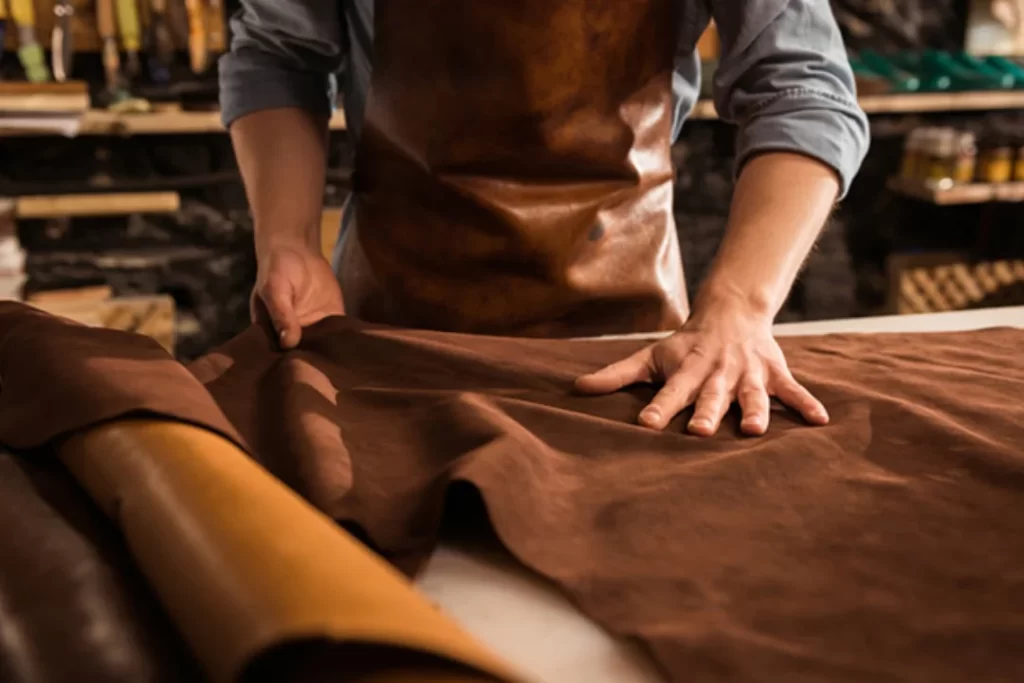
The first step of the manufacturing pu leather is the selection of the base fabric, which is typically a non-woven material like polyester or cotton. This fabric gives the structural support for the PU leather.
In order to enhance its adhesion to the PU coating it has to undergo some treatments. In these treatments the primers or adhesives are used to ensure a strong bond between the fabric and the PU layer.
Polyurethane (PU) resin is mixed with various additives, such as plasticizers, pigments, and stabilizers. These additives determine the final properties of the PU leather, such as its flexibility, color, and durability.
The prepared PU mixture is applied to the treated base fabric using various methods, such as roller coating, knife coating, or spray coating. The coating thickness is controlled to achieve the desired thickness and texture of the PU leather.
After application, the PU coating is subjected to a drying and curing process to remove solvents and ensure proper polymerization of the PU resin. This process transforms the liquid PU mixture into a solid, elastomeric film.
To give it the look of the natural grain of leather, the PU surface is embossed with a textured pattern. This is achieved using heated rollers or embossing machines that create the desired grain effect.
To get the desired color the pu leather is dyed or pigmented. Like topcoats, some other finishing treatments can be applied to increase water resistance and protective coatings to improve abrasion resistance.
Throughout the manufacturing process, quality control checks are conducted to ensure that the PU leather meets the desired specifications for thickness, texture, color, and durability.
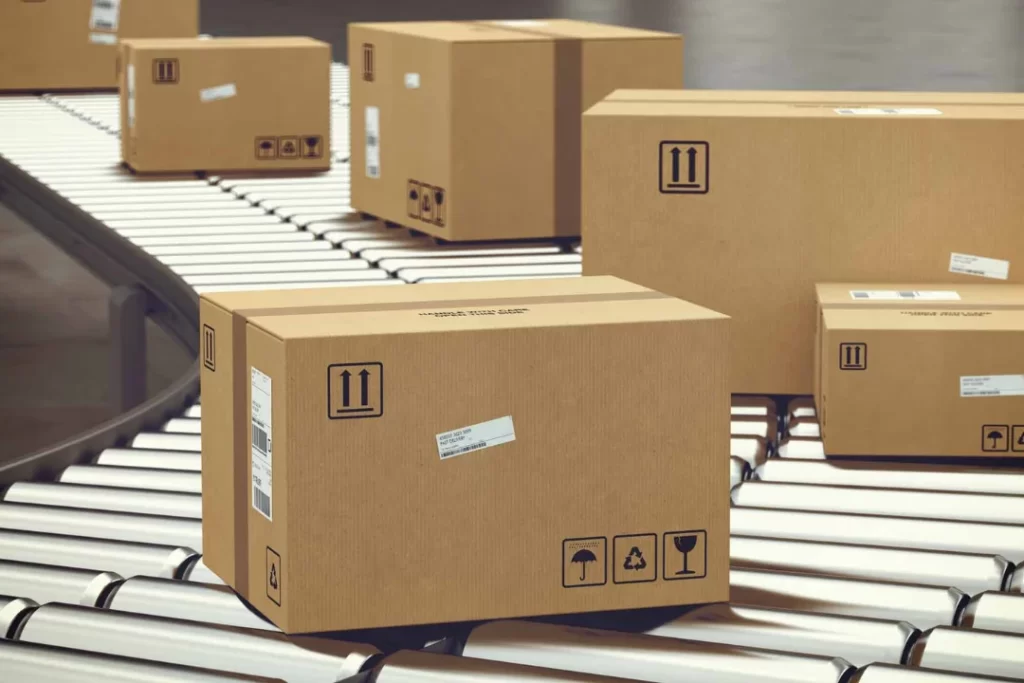
The finished PU leather is inspected, packaged, and shipped to the intended application, whether it’s furniture upholstery, footwear, or fashion accessories.
The lower layers of the leather hide, which are then corrected to have a more uniform grain. This is done by removing imperfections and buffing the surface. Corrected grain PU leather is often used to make shoes, handbags, and wallets. Moreover, beside to these main types of PU leather, there are also many other varieties, such as embossed PU leather, suede PU leather, and metallic PU leather.
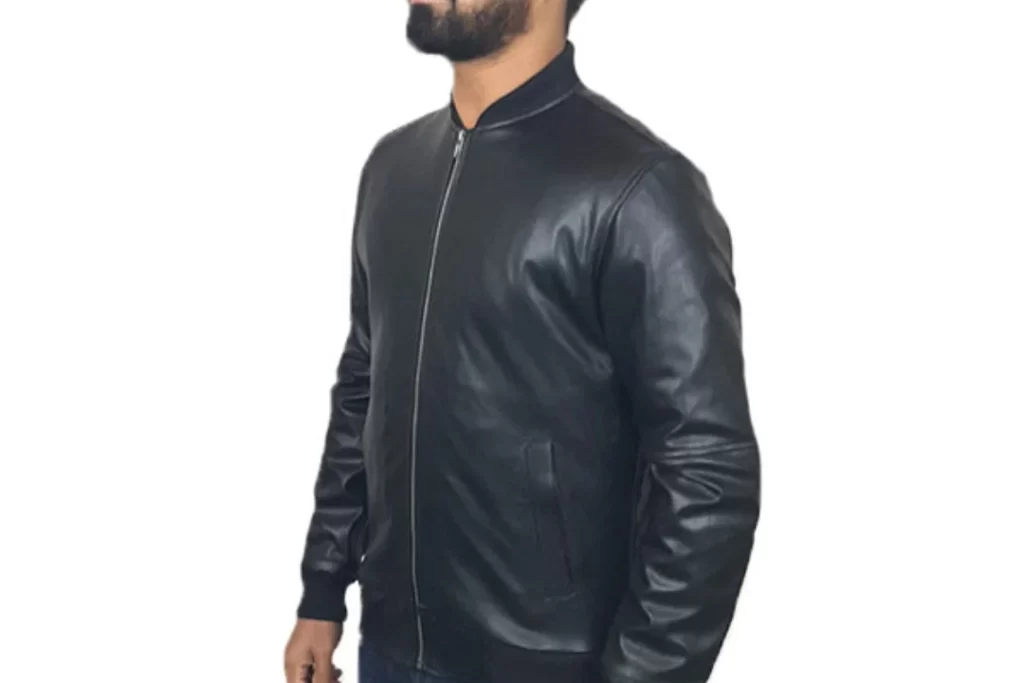
PU leather is a versatile material that can be used to make a wide variety of products. It is a popular choice for many products because it is durable, easy to clean, and cost-effective.
In order to maintain the appearance and longevity of PU leather goods, it requires a proper care and cleaning. So here are some appliances which are ideal for preserving PU leather.
This is the most basic and effective way to clean PU leather. Use a soft, damp cloth dipped in a gentle soap solution and wipe the surface gently. Avoid using harsh detergents or abrasive materials that could damage the PU coating.
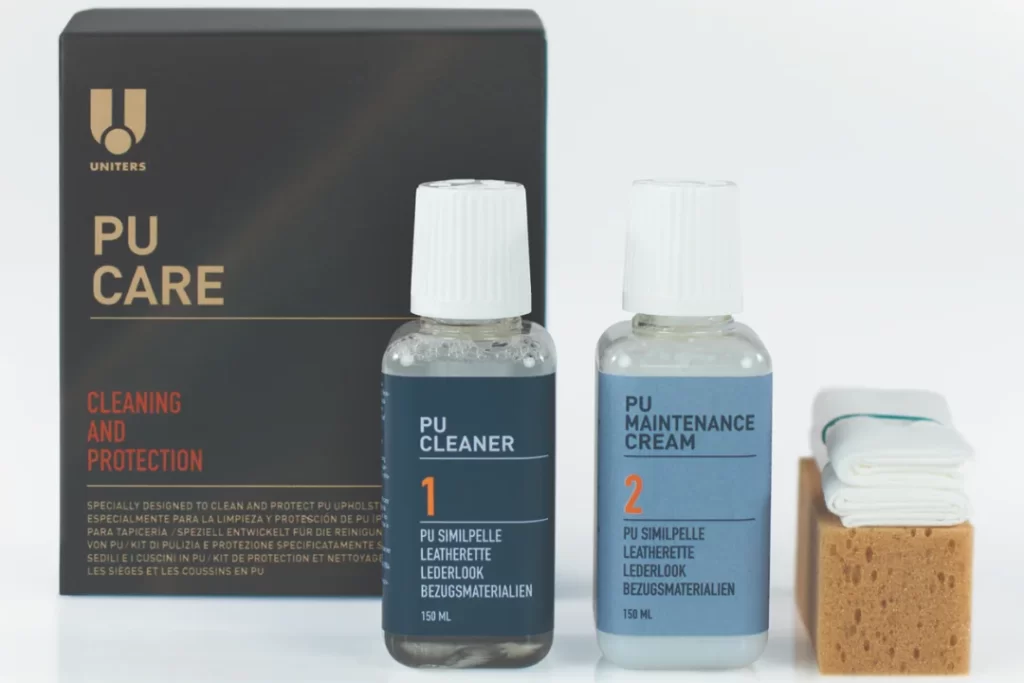
Specialized PU leather cleaners are formulated to remove dirt, stains, and grease without harming the material. These cleaners typically contain mild surfactants and conditioners that help maintain the leather’s suppleness and prevent cracking.
To remove dust and scraps from the textured pu leather surfaces a soft-bristled brush can be used. You should choose a brush with soft bristles that will not scratch the material.
Microfiber cloths are ideal for cleaning and polishing PU leather. They are soft, absorbent, and lint-free, ensuring a streak-free finish.
Applying a PU leather protector can help prevent stains and prolong the life of the material. These protectors typically contain water-repellent and UV-resistant agents that shield the PU coating from harsh elements.
Conditioning PU leather helps maintain its suppleness and prevent cracking. Use a conditioner specifically designed for PU leather, avoiding products meant for genuine leather, as they may contain ingredients that could damage the synthetic material.
For suede PU leather, a suede eraser can be used to remove dirt and stains without damaging the delicate nap.
To maintain the shape of handbags and shoes made of PU leather, use stuffers or forms when not in use. This helps prevent the material from sagging or losing its shape.
Store PU leather items in a cool, dry place away from direct sunlight or extreme temperatures. Avoid storing them in plastic bags, as this can trap moisture and promote mold growth.
Make it a habit to clean and care for PU leather items regularly. This will help keep them looking their best and extend their lifespan
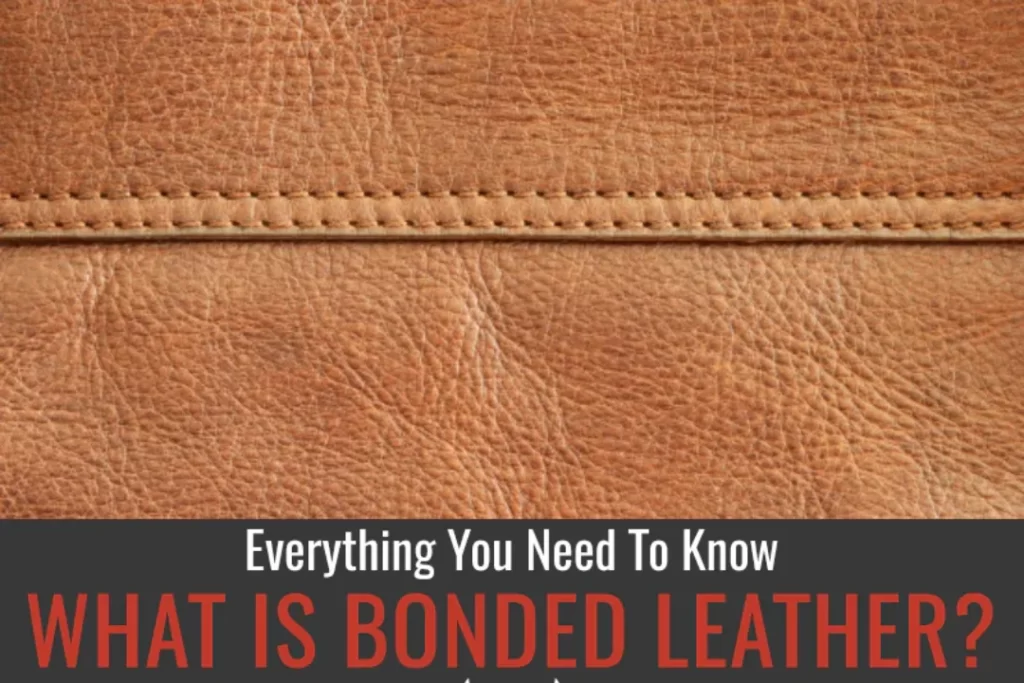
Bonded leather is the most common type of PU leather. It is made by bonding together scraps of leather with a polyurethane resin. Bonded leather is less expensive than genuine leather but it has less durability than real leather. Bonded leather is mostly used for the production of furniture upholstery, car interiors, and wallets.
Bicast leather is a more durable type of PU leather. It is made by using a layer of polyurethane to a backing fabric, such as cotton or polyester. This creates a material that is more resistant to wear and tear than bonded leather. Bicast leather is often used to make footwear, handbags, and jackets.
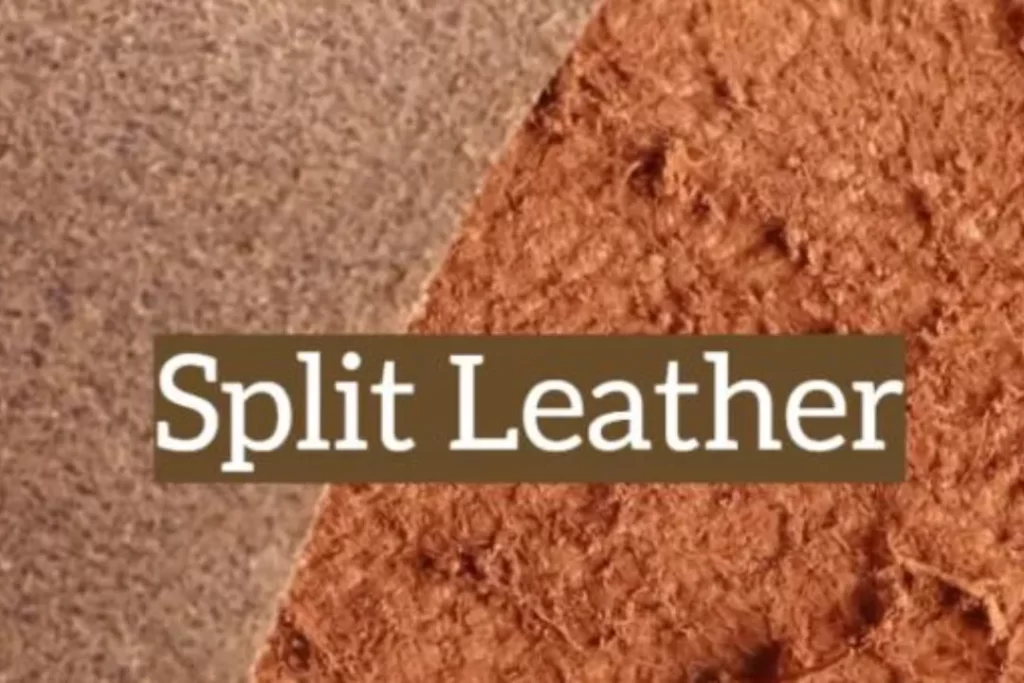
Split leather is made from the lower layers of leather hide, which are less durable than the top layer. It is used to make furniture upholstery, car interiors, and wallets. Split leather is often treated with polyurethane to make it more durable and water-resistant.
Full-grain PU leather is the highest quality type of PU leather. It is made from the top layer of the leather hide, which is the most durable and has the best grain. Full-grain PU leather is often used to make high-quality handbags, wallets, and jackets.
Corrected grain PU leather is made from the lower layers of the leather hide, which are then corrected to have a more uniform grain. This is done by removing imperfections and buffing the surface. Corrected grain PU leather is often used to make shoes, handbags, and wallets. Moreover, beside to these main types of PU leather, there are also many other varieties, such as embossed PU leather, suede PU leather, and metallic PU leather.
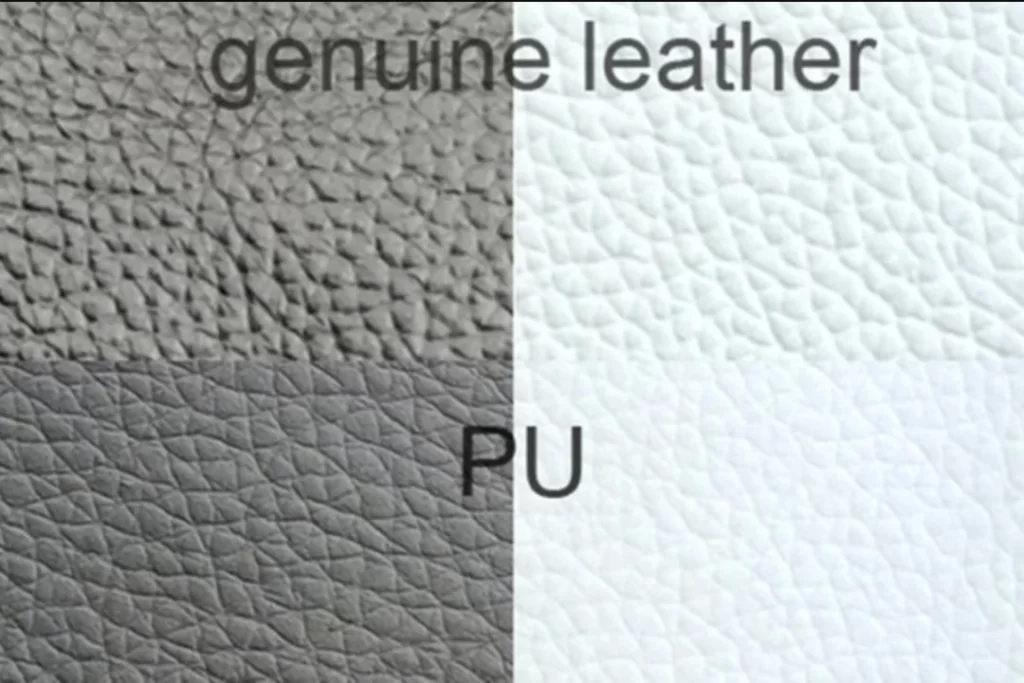
PU leather is a synthetic material that is made to give it the feel and look of genuine leather. It is made by coating a backing material like cotton and polyester with a layer of polyurethane. On the other hand, genuine leather is made of animal skins and undergoes several procedures to become usable. Let’s have a glimpse of the pros and cons of both.
The manufacturing process of PU leather involves less labor and resources than that of genuine leather, that’s why it is more affordable than genuine leather. The cost-effectiveness of PU leather makes it a popular choice for a wide range of product, from footwear and accessories furniture upholstery.
PU leather has diversity in colors and patterns, offering more creative and personalized designs. This flexibility makes PU leather suitable for a wide range of products, from fashion accessories to automotive interiors. Manufacturers can produce PU leather in various textures, resembling the grain of genuine leather or creating unique textures for specific applications.
PU leather is often more water-resistant than genuine leather, making it a practical choice for items that may encounter spills or moisture. Additionally, PU leather can withstand exposure to harsh chemicals and UV rays, extending its lifespan.
PU leather is remarkably easy to clean, often requiring only a mild soap and water solution. It’s also less prone to fading or cracking than genuine leather, reducing the need for frequent maintenance.
PU leather eliminates the ethical concerns associated with animal welfare and the potential for inhumane treatment of animals in the leather industry. For those who prioritize ethical sourcing, PU leather offers a more compassionate option.
PU leather is less breathable than genuine leather, meaning it traps heat and moisture more effectively. This can make PU leather less comfortable in warm weather or during physical activity.
Although the environmental impact of PU leather production is generally lower than that of genuine leather production, it still involves the use of petroleum-based raw materials, which are non-renewable resources with their own environmental impression.
Genuine leather possesses a unique and natural grain that cannot be produced by synthetic materials. The diversity in the grain give each piece of genuine leather a distinct characteristic and appeal.
Genuine leather is renowned for its durability and longevity. With proper care, genuine leather products can last for years or even decades. Its ability to withstand wear and tear makes it a suitable proffered choice for high-end products and items.
Genuine leather is naturally more breathable than PU leather. This offers better air circulation and moisture absorption, making genuine leather more comfortable in warm weather and during physical activity as well.
Genuine leather develops a unique patina or aged appearance over time. This patina is often seen as a desirable characteristic of genuine leather which adds to its significance and value.
Genuine leather is significantly more expensive than PU leather. This is because of the demand for genuine leather, the labor-intensive production process, and the limited availability of high-quality hides.
The production of genuine leather raises ethical concerns regarding animal welfare. The treatment of animals in the leather industry has been the subject of scrutiny and debate, that’s why some consumers prefer to avoid genuine leather.
PU leather has become a popular alternative to genuine leather, offering a compelling blend of sustainability, versatility, and cost-effectiveness. The benefits of PU leather for consumer are:
PU leather production generally has a lower environmental impact than genuine leather production. It requires less water, energy, and resources, and generates less waste.
Before plunging into the purchase of a Moto Jacket, you must analyze your personal style preferences. Are you inclined towards classic styles, or are you keen on taking bold fashion risks? Is practicality important to you, or are you primarily driven by aesthetic appeal? Your individual style should guide your jacket selection process to ensure that it seamlessly integrates into your existing wardrobe. For a classic style, a traditional leather Moto Jacket could be an excellent choice, while those seeking a quirky, distinct look might opt for a metal-studded, vividly-colored variant.
PU leather eliminates the ethical concerns associated with animal welfare. It is produced without harming animals, aligning with the growing consumer preference for ethical and cruelty-free products.
PU leather comes in a wide range of colors, patterns, and textures, allowing consumers to express their personal style and match various fashion trends.
PU leather is significantly more affordable than genuine leather, making it a more accessible choice for consumers seeking stylish and durable products without breaking the bank.
PU leather is generally durable and water-resistant, making it suitable for various applications, including footwear, furniture upholstery, and accessories. It can also be easier to clean and maintain than genuine leather.
PU leather also offers several advantages for manufacturers:
PU leather is less expensive to manufacture than genuine leather, reducing production costs and increasing profit margins.
PU leather can be used in a wide range of products, from footwear and accessories to furniture upholstery and automotive interiors, expanding manufacturing opportunities.
PU leather is easier to process and customize than genuine leather, allowing manufacturers to create a variety of products with unique designs and textures.
PU leather’s sustainability credentials can attract environmentally conscious consumers, enhancing brand reputation and market positioning.
The ethical production of PU leather aligns with growing consumer and regulatory demands for cruelty-free products, strengthening brand image and customer loyalty.
Distinguishing between PU leather and genuine leather can be challenging, especially for novices. However, there are several telltale signs that can help differentiate these two materials.
Genuine leather exhibits a unique and natural grain pattern with variations in texture and color. PU leather, while often able to mimic the grain, may appear more uniform and artificial.
Genuine leather has a soft, supple, and slightly oily feel. PU leather may feel smoother, stiffer, and less pliable.
Genuine leather edges are typically finished with a natural wax or sealant, giving them a slightly rounded and irregular appearance. PU leather edges may appear more uniform and perfectly finished.
Place a drop of water on the surface of the material. Genuine leather will absorb the water, causing it to darken. PU leather will repel the water, causing it to bead up on the surface.
Rub a damp cloth on the material. Genuine leather will absorb some moisture, causing the cloth to become slightly damp. PU leather will resist moisture, keeping the cloth dry.
This test should be conducted with extreme caution and only as a last resort.
Take a small, inconspicuous sample of the material.
Genuine leather will curl up, burn slowly, and emit a charred odor. PU leather will burn quickly, melt, and emit a chemical odor.
Genuine leather is generally more expensive than PU leather.
Genuine leather products will often be labeled as “genuine leather” or “real leather.” PU leather products may be labeled as “PU leather,” “faux leather,” or simply “leather.”
Sure, here is an overview of the advancements in PU leather technology and its ability to look like genuine leather:
PU leather technology has undergone significant advancements over the years, enabling it to closely mimic the appearance and texture of genuine leather while offering enhanced properties. These advancements include:
Advanced embossing techniques allow PU leather to replicate the intricate grain patterns of genuine leather, creating a more realistic and authentic appearance.
Sophisticated pigment printing technologies enable PU leather to achieve a wider range of colors and patterns, matching the versatility of genuine leather.
Advanced surface treatments, such as micro-embossing and polyurethane coatings, provide PU leather with a more natural feel and texture, closer to that of genuine leather.
PU leather formulations are being enhanced with additives that improve durability, water resistance, and breathability, making it a more practical and long-lasting alternative to genuine leather.
PU leather’s ability to mimic genuine leather has improved significantly due to these technological advancements. It can now replicate the look and feel of various types of genuine leather, including smooth, textured, and even distressed leather. This ability to imitate genuine leather has expanded the applications of PU leather and made it a more compelling choice for consumers.
To conclude I’ll say that PU leather has emerged as a popular choice for both consumers and businesses, offering a viable alternative to its natural counterparts. Although it has many advantages such as; giving the feel and look of genuine leather, cost-effectiveness, versatility, and ethical considerations at the same time it has some disadvantages like less durability and sustainability. If cost, versatility, and ethical considerations are paramount, then PU leather is a good choice. But if durability, breathability, and natural look are more important then genuine leather is a better choice. The decision comes down to personal preferences and specific applications. Hopefully, this detailed discussion will really help you understand what is PU leather, what are its pros and cons, its significance, and innovations, and how it has become a better choice for both consumers as well as manufacturers.
PU leather can be a good choice for shoes, especially in terms of cost-effectiveness and versatility. However, it may not be as durable or breathable as genuine leather shoes in some cases.
High-quality leather is typically more durable, resistant to wear and tear, more environmentally friendly, and has a genuine leather-like texture.
Yes some types of PU leather can be recycled, contributing to sustainability efforts in certain production processes.
The lifespan of PU leather varies depending on the quality and usage. High-quality PU can last several years with proper care and maintenance.
No spam, notifications only about Latest posts, updates.

Find Out what is pu leather and its increasing popularity as a sustainable alternative to real leather In the realm of fashion and design, genuine

What Is A Moto Jacket? Exploring The Ultimate Jacket Fashion Garments of 2023 Are you excited about emerging trends in fashion? Perhaps you want to
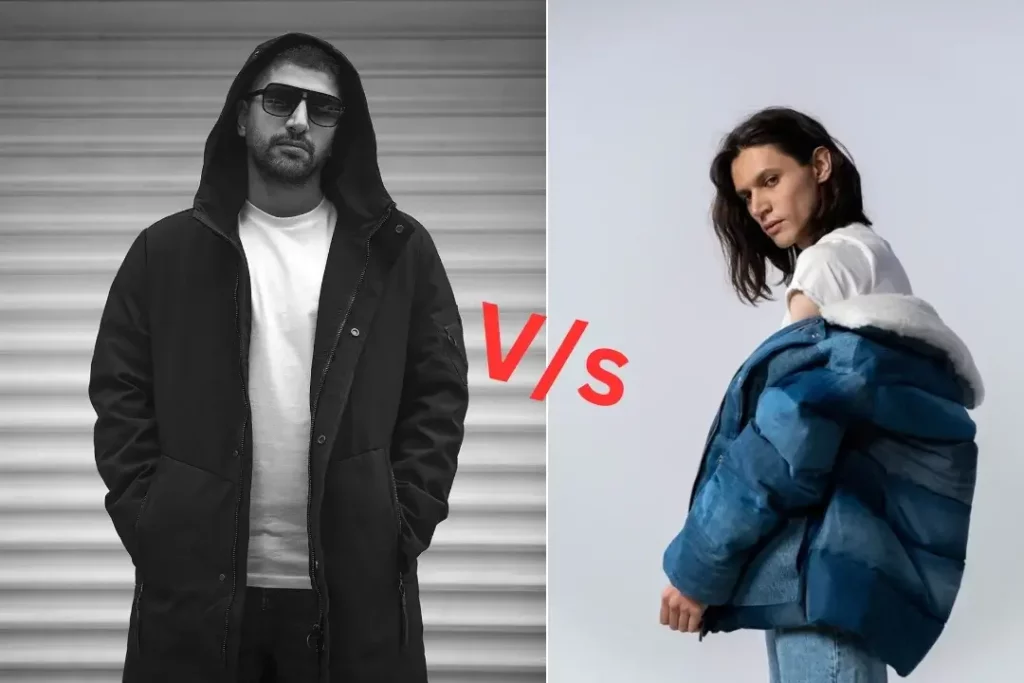
Parka vs Puffer: A Guide For Your Wintery Dilemma “Unveil The Difference Between Park And Puffer Jacket And Who Reigns Supreme” Are you finding it

The Real Truth About How Long Does Faux Leather Last? Uncovering Its Actual Lifespan “Debunking the Myths: What the Research Really Says About How Long
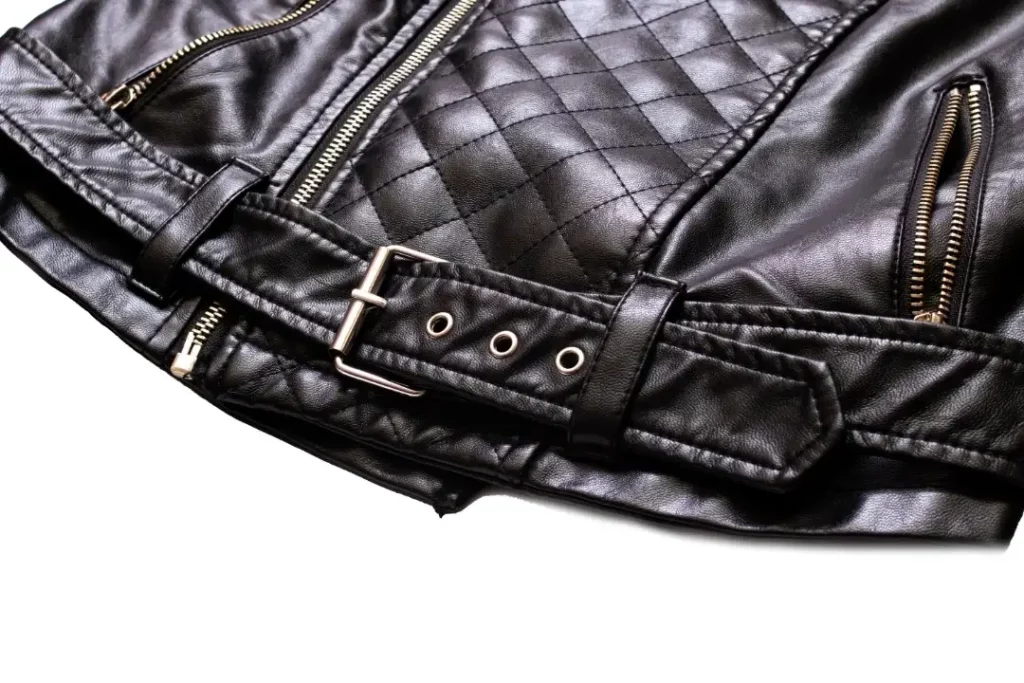
Why Should you wear a belt with jacket? The Reason May Shock You! “Discover the amazing features and benefits of wearing a jacket belt” Did
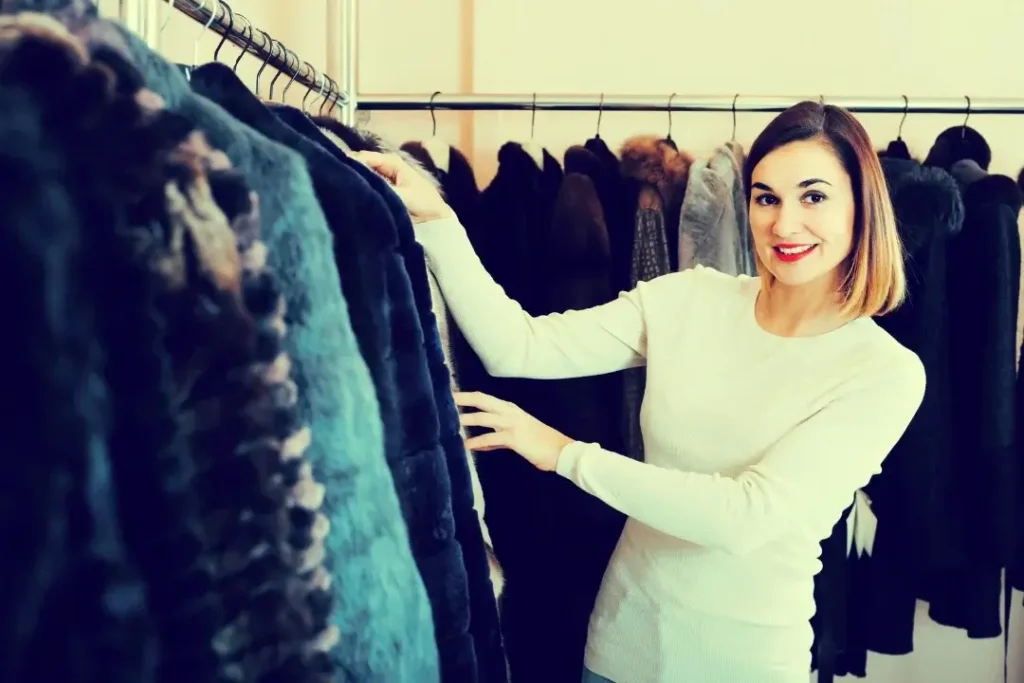
Best Type of Coat for Winter For Men And Women : A Comprehensive Guide You Must Read Before Choosing Your Next Winter Coat “Your Ultimate
© 2023 All rights reserved
Leather Puffer Jacket